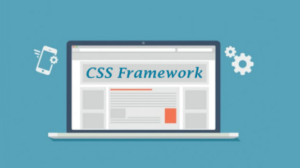In today’s fast-paced digital world, web developers and designers are constantly seeking ways to streamline their workflows, improve efficiency, and create visually stunning websites. One tool that has gained significant popularity in achieving these goals is CSS frameworks. These frameworks provide a set of pre-written, reusable code snippets that simplify the process of styling web pages. In this article, we will delve into the power of CSS frameworks, exploring their advantages, use cases, and popular options available.
Advantages of CSS Frameworks
First and foremost, CSS frameworks offer a structured and organized approach to web design. They provide a consistent set of rules and conventions that developers can follow, ensuring a cohesive and professional appearance for their websites. This consistency helps maintain a unified design language throughout the project.
Moreover, besides saving time and effort, CSS frameworks are known for their responsiveness. Therefore, they offer pre-built grids and components that automatically adapt to various screen sizes and devices. This responsiveness is crucial in today’s mobile-dominated landscape, making sure your website looks impeccable across smartphones, tablets, and desktops.
Popular CSS Frameworks
Moving on, let’s explore some of the most popular CSS frameworks widely used in the web development community.
- Bootstrap: Bootstrap is a frontrunner among CSS frameworks, known for its extensive library of ready-to-use components and responsive grid system. It is a versatile choice for both beginners and experienced developers due to its extensive documentation and active community.
- Foundation: Foundation is another robust CSS framework offering a flexible grid system, customizable design components, and a mobile-first approach. It empowers developers with the tools to create unique and engaging web experiences.
- Bulma: Bulma is a lightweight and modern CSS framework with a minimalistic design philosophy. Hence, it provides a straightforward and intuitive structure, making it a fantastic choice for developers who prefer simplicity and customization.
- Tailwind CSS: Tailwind CSS takes a different approach by offering utility-first classes, allowing developers to create custom designs rapidly. It provides a high degree of flexibility and control over the styling of elements.

Use Cases for CSS Frameworks
Additionally, CSS frameworks find application in a wide range of web development scenarios.
- Rapid Prototyping: When you need to quickly create a prototype or a minimum viable product (MVP), CSS frameworks can significantly expedite the process. With pre-designed components and styles, you can focus on functionality without spending too much time on aesthetics.
- Consistent Branding: Maintaining a consistent brand identity is crucial for businesses. CSS frameworks help in ensuring that your website adheres to your brand’s visual guidelines, creating a memorable and professional online presence.
- Cross-Browser Compatibility: Ensuring that your website looks and functions consistently across different browsers can be challenging. Moreover, CSS frameworks simplify this task by providing browser-specific styles and fixes, reducing compatibility issues.
Challenges and Considerations
However, it’s important to note that CSS frameworks are not a one-size-fits-all solution. They come with their own set of challenges and considerations.
- Learning Curve: Beginners may find it challenging to grasp the intricacies of a particular CSS framework. It’s essential to invest time in understanding how the framework works to harness its full potential.
- Customization: While CSS frameworks offer a wide range of pre-designed styles, achieving a truly unique design may require extensive customization. This can be time-consuming and may negate some of the efficiency gains.
- File Size: Furthermore, some CSS frameworks, especially the comprehensive ones, can result in larger file sizes. This can affect website loading times, especially on slower internet connections.
Conclusion
In conclusion, CSS frameworks are powerful tools that can significantly enhance the web design and development process. They provide structure, consistency, and responsiveness, making it easier to create visually appealing and functional websites. While there are challenges to consider, the benefits far outweigh the drawbacks. By choosing the right CSS framework and mastering its intricacies, web developers and designers can take their projects to the next level, delivering outstanding online experiences to their users.

